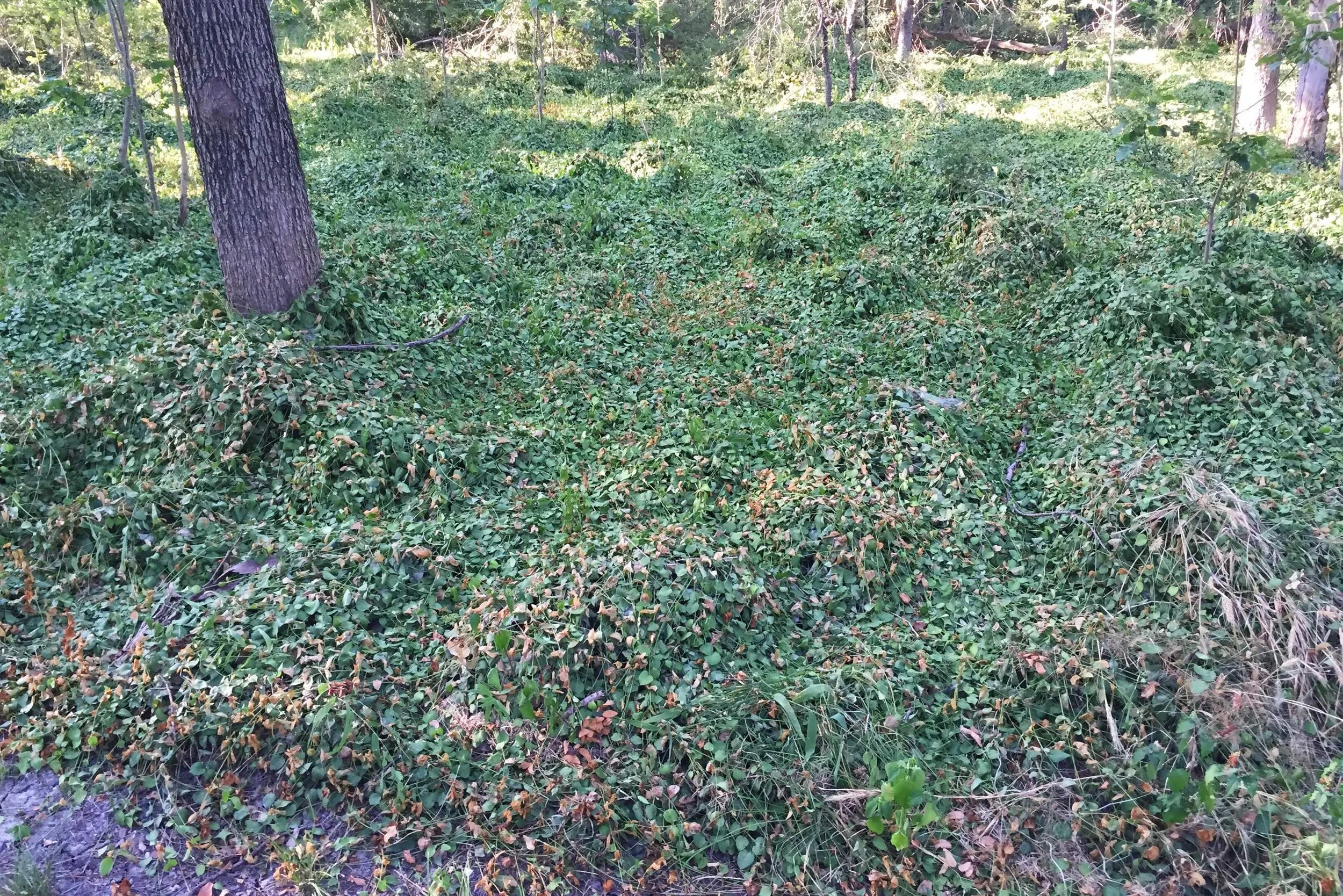Spring Creek
Along Spring Creek, near the intersection of State Highway 190 and US Highway 75 in Collin County, Texas, there is the Spring Creek Nature Area, a section of land set aside by the City of Richardson for public recreation. One would never guess from these photos that this area is bounded by 8-lane highways and mid-rise office buildings. There is a lot of value in these 100 acres, both economically and ecologically. Many Texas native plants call this area home, despite the surrounding decimation. And in a plot-twist at the end of this post, one will see early pioneers called this area home, as well.
Spikes of Liatris punctata var. mucronata, Texas Gayfeather
Liatris punctata var. mucronata, Texas Gayfeather
Liatris punctata var. mucronata, Texas Gayfeather
These are the first blooms of Gayfeather that I've spotted this season. Liatris typically blooms in the fall, even though some nursery growers will force blooms for the spring. But who can blame them? It makes a very desirable home garden specimen. These will be welcome blooms to pollinators desperate for food in the latter part of a hot and dry summer. In my last post, I detailed the Liatris in Young County and its parasitic partner, Dodder.
Rhus aromatica, Fragrant Sumac
Rhus aromatica, Fragrant Sumac
Sumac has several native Texas species that will make great arid garden specimens, and R. aromatica is included in this list. It stays relatively compact and is a good source of fall color, a quality atypical for much of Texas foliage. It derives its name from the strong smell when the leaves are crushed. Like most Sumacs, it provides good food and cover for wildlife.
Dalea multiflora, White Prairie Clover
Another repeat from last week, this Dalea was a bit more advanced in its bloom cycle.
Ilex decidua, Possumhaw Holly
Ilex decidua, Possumhaw Holly
Possumhaw puts on a great show in the winter. The flowers displayed above will give way to cherry-red berries in the late fall and winter when the leaves have fallen. This is another summer bloomer that is valuable to pollinators, and the ants in the photo agree.
Bouteloua curtipendula, Sideoats Grama
Sideoats is beneficial grazing for hoofed wildlife, even if most deer have been all but exterminated from the developed area. This grass is readily used in agricultural seeding programs for livestock grazing. It is very drought tolerant and durable, judging by its use as an irrigation-free highway median planting in Dallas County.
Heliotropium tenellum, White Heliotrope
Heliotropium tenellum, White Heliotrope
One of two tiny flowers to identify on this site, Heliotrope is found throughout the Midwest and Southeast. Withstanding drought, it typically grows to 2 feet and then tends to flop. It is a tough annual that grows best in limestone prairies.
Amphiachyris dracunculoides, Prairie Broomweed
Amphiachyris dracunculoides, Prairie Broomweed
The second tiny flower is the Broomweed, a familiar toy for pasture-raised children. This annual is typically found in over-grazed or mismanaged sites, taking advantage of the lack of groundcover and creating monocultures.
Bothriochloa laguroides, Silver Bluestem
Bothriochloa laguroides, Silver Bluestem
Big, Little, and Bushy Bluestems have begun to be regularly accepted into native gardens, but Silver Bluestem has yet to reach the level of popularity found with its cousins. With the nearly reflective seedheads, it deserves its spot in the garden. This grass is typically the first desirable species to repopulate mismanaged land.
Vinca major
Vinca major
Yikes! This is an example of the destruction an invasive species can do. Vinca major is a groundcover that has been traditionally used in residential landscapes. In this situation, it has escaped a yard from a close-by neighborhood and has taken hold in this preserved ecosystem. Steps need to be taken by the City of Richardson to curb the growth of this invasive.
Rivina humilis, Pigeonberry
Rivina humilis, Pigeonberry
Pigeonberry is an attractive perennial that tolerates a good amount of shade and provides necessary food to many birds. Unlike most plants, R. humilis continually blooms throughout the warm season, often bearing fruit and blooming simultaneously.
Gleditsia triacanthos, Honeylocust
Gleditsia triacanthos, Honeylocust
Gleditsia triacanthos, Honeylocust
This small tree is traditionally found north and east of the Brazos River and in rich, bottomland soils. It has a wicked defense system, much like the common Honey Mesquite. It also has an interesting growth pattern, and provides some browse for wildlife in the form of seeds. Otherwise, this tree doesn't add much value to the ecosystem.
Erigeron strigosus, Prairie Fleabane
Erigeron strigosus, Prairie Fleabane
There are many great Erigeron species found throughout North America. The form of this Prairie Fleabane is particularly attractive, standing as a solitary landscape soldier. I'm imagining this species planted en masse in a landscape, the flower heads bending in unison with the breeze.
Vernonia baldwinii, Baldwin's Ironweed
I found this Ironweed in Young County, but here it is again in Collin County with a visiting pollinator.
Symphyotrichum drummondii var. texanum, Texas Aster
Asteraceae is one of the largest flora families with plants like Sunflower, Coneflower, and even Dandelion. This Aster species was identified by Thomas Drummond in 1833, a Scottish naturalist who traveled across much of Texas, with special attention paid to the Brazos, Colorado, and Guadalupe Rivers.
Setaria scheelei, Southwestern Bristlegrass
Setaria scheelei, Southwestern Bristlegrass
The inflorescence of this Bristlegrass is striking, taking the appearance of an Asiatic ornamental like Pennisetum. This shade-loving forb is found west to Arizona and south to San Luis Potosi, Mexico.
Chasmanthium latifolium, Inland Seaoats
Inland Seaoats is a great option for a dry, shade garden. The grass is low maintenance and has very attractive drooping seed heads that gradually turn golden brown in the fall. This species is found throughout much of Texas, typically along and east of Interstate 35.
Opuntia engelmannii var. linguiformis, Cow's Tongue Prickly Pear
Opuntia engelmannii var. linguiformis, Cow's Tongue Prickly Pear
This variety of Texas native Prickly Pear was originally discovered in South Texas, but has been readily adapted to landscape applications. Being out of its native range, this specimen is undoubtedly a leftover of a former homestead. Pictured above are nymphs of Cactus Coreid, a bug that sucks nutrients from the pads of the Prickly Pear, leaving behind the discolored blotches. Traditionally, they do not have an impact on the cactus.
Mushroom
I am not well-versed in mushroom identification, but this was found on a decomposing log in a woodland section of the nature preserve.
Bouteloua gracilis, Blue Grama
Bouteloua gracilis, Blue Grama
Here is another graceful native Grama. Bouteloua gracilis is found from the Great Plains to the Rockies and doesn't get much over 12 inches tall. The seedheads resemble hairy caterpillars that attach to the stem horizontally.
Centaurea americana, American Basketflower
Centaurea americana, American Basketflower
During this time of year, one has to appreciate the spent blooms of recent grandeur. This Basketflower resembles a lion's tail with its tiny hairs. Underneath these "hairs" are small, black seeds, ready to be dispersed for next year's crop. I also found this plant in Mason County.
Scabiosa atropurpurea, Pincushion
Scabiosa atropurpurea, Pincushion
Scabiosa is native to the Mediterranean and has been found in a few pockets around the US. One of these pockets is in northeast Texas. Where this species becomes established, it tends to choke out native vegetation and creates monocultures, hence its invasive status.
Lindheimera texana, Texas Yellowstar
I find the spent inflorescence of Yellowstar more interesting than the yellow, five-petaled flower that becomes a bit generic during the spring. This species is found throughout Texas and southern Oklahoma. I have documented this plant in Travis County.
Asclepias viridiflora, Green Comet Milkweed
This Milkweed was looking especially stellar in the evening sunlight. I detailed this plant first in Young County. I have also found this Milkweed in Katie Jackson Park in north Dallas.
To my surprise, there were two cemeteries located in this nature preserve. Above is the Texas historical marker detailing the local history. Below are the graves of Jacob Routh and Robert Campbell, important pioneers to this area. The burden of maintaining these cemeteries has fallen to the families of the interred.













































